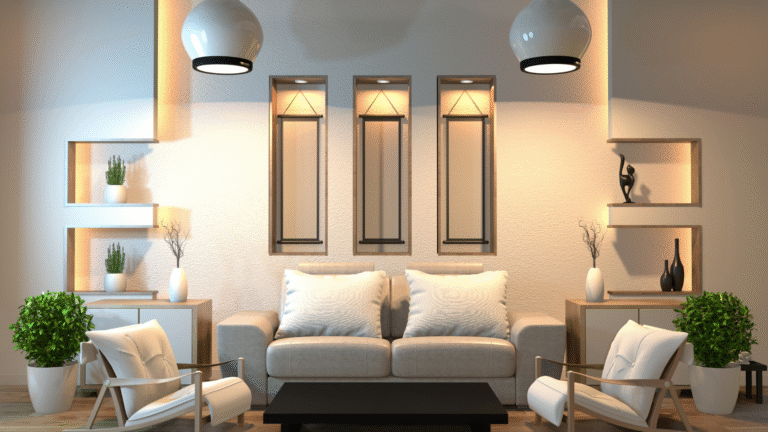Owning a rental property can be one of the most rewarding investment strategies, but maximizing its value requires more than just collecting monthly rent checks. Whether you’re new to rental property investment or looking to optimize your existing portfolio, understanding how to increase your property’s worth systematically is essential for long-term success.
The rental property market has undergone significant evolution, with tenants increasingly seeking high-quality amenities and landlords facing greater competition. Smart property owners recognize that strategic improvements and effective management can dramatically impact both rental income and overall property appreciation. This comprehensive rental property evaluation guide will walk you through six proven methods to enhance your investment’s value while maintaining profitability.

Understanding Rental Property Value Enhancement
Before exploring specific strategies, it’s essential to understand what drives rental property value. Unlike owner-occupied homes, rental properties are valued based on their income-generating potential alongside traditional market factors. The relationship between rental income, operating expenses, and property appreciation creates multiple opportunities for value enhancement.
Rental property for beginners often starts with the misconception that value increases happen automatically over time. While market appreciation does play a role, active management and strategic improvements typically yield far better returns. The key lies in balancing upfront investments with long-term benefits, ensuring that every dollar spent contributes meaningfully to either immediate rental income or future property value.
Successful rental property investment tips always emphasize the importance of understanding your local market. What works in one neighborhood might not translate to another, and tenant preferences can vary significantly based on demographics, location, and local economic conditions. This market awareness forms the foundation for making informed decisions about where to invest your improvement dollars.
1. Strategic Kitchen and Bathroom Upgrades
Kitchen and bathroom renovations consistently deliver the highest return on investment for rental properties. These spaces significantly influence tenant decisions and justify higher rental rates when executed thoughtfully. However, the key is finding the sweet spot between attractive upgrades and cost-effective improvements that won’t price you out of your target market.
For kitchens, focus on updates that provide immediate visual impact without breaking the budget. Fresh paint, updated cabinet hardware, modern lighting fixtures, and new countertops can transform a dated kitchen into an appealing space. Stainless steel appliances, while more expensive, often pay for themselves through higher rental rates and reduced vacancy periods.
Bathroom improvements should prioritize functionality alongside aesthetics. Updated fixtures, improved lighting, fresh tile or flooring, and adequate storage solutions appeal to virtually all tenants. Consider water-efficient fixtures that can reduce utility costs if you cover water expenses, creating ongoing savings that improve your property’s net operating income.
The challenge with kitchen and bathroom upgrades lies in avoiding over-improvement for your market. Luxury finishes in a modest rental market won’t generate proportional returns, while cheap materials might require frequent replacement. Research comparable rentals in your area to understand what level of finishes tenants expect and are willing to pay for.
2. Enhance Curb Appeal and Outdoor Spaces
First impressions matter tremendously in the rental market, making curb appeal improvements some of the most cost-effective value enhancers available. Prospective tenants often make decisions within minutes of arriving at a property, and attractive exterior presentation can justify premium rental rates while reducing marketing time.
Landscaping improvements offer excellent returns on investment when planned strategically. Well-maintained lawns, defined garden beds, and mature plantings create an inviting atmosphere that suggests good overall property maintenance. Consider low-maintenance options that look attractive year-round without requiring extensive ongoing care.
Exterior painting and maintenance projects should be viewed as essential investments rather than optional expenses. Fresh paint not only improves appearance but also protects structural elements from weather damage. Address any obvious maintenance issues like damaged siding, worn roofing, or cracked walkways before they become larger problems.
Outdoor living spaces have become increasingly important to tenants, especially following recent changes in lifestyle preferences. Simple additions like a patio area, outdoor seating space, or even basic deck improvements can differentiate your property from similar rentals in the market.
3. Implement Energy Efficiency Improvements
Energy efficiency upgrades serve a dual purpose in rental property value enhancement. They reduce operating costs while appealing to environmentally conscious tenants who prioritize lower utility bills. These improvements often qualify for tax incentives, further improving your investment returns.
Window upgrades provide significant energy savings while improving property aesthetics and tenant comfort. Modern windows reduce heating and cooling costs, minimize outside noise, and often qualify for utility rebates or tax credits. While the upfront investment can be substantial, the combination of energy savings and increased rental appeal typically justifies the expense.
HVAC system improvements should focus on both efficiency and reliability. Modern systems not only reduce energy consumption but also require less maintenance and provide better climate control. Consider programmable thermostats, improved insulation, and regular system maintenance as part of your overall efficiency strategy. Upgrading to ENERGY STAR-certified HVAC units can significantly lower utility bills and increase tenant satisfaction. Smart thermostats also offer tenants more control over their environment, which can be a selling point during property tours. Ensure all ductwork is properly sealed and insulated to avoid energy loss and optimize airflow. Seasonal servicing by professionals helps extend system lifespan and prevent unexpected breakdowns.
Lighting upgrades to LED fixtures throughout the property reduce electricity consumption while providing better illumination. These relatively inexpensive improvements demonstrate attention to modern conveniences and can contribute to overall energy cost reductions. Motion sensor lighting in shared areas like hallways or basements adds security while saving energy.
The main drawback of energy efficiency improvements is the substantial upfront investment required for meaningful impact. However, many utility companies offer rebates and financing programs that can offset initial costs while providing immediate operational benefits. In the long run, these upgrades often pay for themselves through lower utility bills and reduced maintenance needs. Marketing your rental property as energy-efficient can also attract environmentally conscious tenants. Plus, some improvements may qualify for tax incentives, adding to your return on investment.
4. Maximize Storage and Space Utilization
Storage consistently ranks among the top priorities for rental tenants, making space optimization one of the most valuable improvements you can make. Creative storage solutions can make smaller properties feel more spacious and functional, often justifying higher rental rates.
Built-in storage solutions provide the greatest impact on perceived space and functionality. Custom closet systems, built-in shelving, and organizational features create lasting value that tenants appreciate. These improvements become permanent fixtures that enhance the property’s overall appeal and marketability.
Basement and attic improvements can add significant functional space without major structural changes. Finishing these areas for storage or living space increases the property’s overall square footage and utility. However, ensure any improvements meet local building codes and safety requirements. Proper lighting, insulation, and ventilation are essential to make these spaces livable and attractive.
Multi-functional spaces appeal to modern tenants who often work from home or need flexible living arrangements. Consider how rooms can serve multiple purposes through thoughtful design and built-in features that maximize utility without sacrificing comfort. For instance, a guest bedroom that doubles as a home office with a Murphy bed or a fold-down desk increases practicality. These adaptable designs can increase rental value, appeal to a broader range of tenants, and help reduce vacancy rates.
5. Upgrade Flooring Throughout the Property
Flooring improvements provide immediate visual impact while addressing practical concerns about durability and maintenance. The right flooring choices can significantly reduce long-term maintenance costs while justifying higher rental rates through improved aesthetics and functionality.
Hardwood floors remain highly desirable among tenants and contribute significantly to property value. While more expensive initially, quality hardwood can last decades with proper maintenance and refinishing. Consider engineered wood options that provide similar aesthetics with improved durability and lower maintenance requirements.
Modern flooring alternatives like luxury vinyl plank offer excellent durability and water resistance while mimicking the appearance of more expensive materials. These options work particularly well in high-traffic areas, bathrooms, and basements where traditional hardwood might not be practical.
Carpet replacement should focus on neutral colors and quality materials that can withstand normal wear while maintaining their appearance. However, many tenants prefer hard surface flooring for cleanliness and allergy concerns, making this a market-dependent decision.
The challenge with flooring upgrades is the significant upfront cost and disruption to occupied units. Planning these improvements between tenancies minimizes disruption while ensuring you can complete the work properly without rushing.
Hardwood, laminate, or vinyl plank flooring options offer durability, modern aesthetics, and easier maintenance, which can justify the higher initial investment. These flooring types are particularly attractive to pet owners and families, expanding your potential renter base. In competitive markets, updated flooring can help your rental property stand out, increase rentability, and support higher rental rates. Always factor in long-term durability, tenant preferences, and your budget before deciding on a flooring upgrade.
6. Focus on Smart Home Technology and Security Features
Modern tenants increasingly expect smart home features and enhanced security measures. These technological improvements can differentiate your property from competitors while potentially reducing insurance costs and improving overall security.
Smart thermostats, keyless entry systems, and security cameras provide both convenience and peace of mind for tenants. These features often justify higher rental rates while potentially reducing maintenance calls and security concerns. Choose systems that are user-friendly and don’t require extensive technical knowledge to operate.
Security improvements like upgraded locks, motion-sensor lighting, and alarm systems make properties more attractive to safety-conscious tenants. These features can also reduce insurance premiums and liability concerns, providing ongoing financial benefits beyond increased rental income.
Internet infrastructure improvements have become essential in many markets. Ensure adequate wiring for high-speed internet, consider whole-home WiFi systems, and verify that connectivity meets modern tenant expectations for remote work and entertainment needs.
The downside of technology upgrades is the ongoing maintenance and potential obsolescence of systems. Choose established technologies with good support networks rather than cutting-edge features that might become outdated quickly.
Effective Rental Property Management Strategies
Successful value enhancement requires more than physical improvements; it demands effective rental property management strategies that protect your investment while maximizing returns. Professional property management can often pay for itself through reduced vacancy rates, better tenant screening, and proactive maintenance approaches.
Regular rental property maintenance checklist implementation prevents small issues from becoming expensive problems. Systematic inspections, preventive maintenance schedules, and prompt response to tenant concerns protect your rental property value while maintaining positive tenant relationships.
Understanding how to rent a rental property safely involves thorough tenant screening, proper lease agreements, and compliance with local regulations. These practices protect your rental property investment while ensuring steady rental property income and reducing legal risks.
Maximizing Rental Property Tax Benefits
Property improvements often qualify for various rental property tax benefits that can significantly impact your overall investment returns. Understanding depreciation schedules, repair versus improvement classifications, and available tax credits helps optimize your financial strategy.
Consult with tax professionals to ensure you’re maximizing available deductions while properly categorizing expenses. Some improvements may qualify for immediate deductions, while others must be depreciated over time. Proper record-keeping and professional guidance ensure you capture all available benefits.
Potential Challenges and Considerations
Value enhancement projects require careful budgeting and realistic expectations about returns on investment. Over-improving for your market can result in negative cash flow, while under-investing might leave money on the table. Market research and professional guidance help strike the right balance.
Financing improvements requires careful consideration of available options and their impact on overall property economics. Cash purchases provide immediate benefits, while financing allows larger projects but increases ongoing costs. Evaluate each option based on your overall investment strategy and available resources.
Construction and improvement projects can create temporary disruptions that affect rental income and tenant satisfaction. Plan projects carefully to minimize vacancy periods and communicate effectively with existing tenants about necessary improvements.
Always prioritize upgrades that improve both functionality and appeal, such as modern kitchens, energy-efficient appliances, or updated bathrooms. These enhancements not only boost rental property value but also attract higher-quality tenants willing to pay more. Don’t overlook curb appeal—landscaping, exterior paint, and lighting improvements create strong first impressions.
Consider adding smart home features like keyless entry or smart thermostats, which are increasingly valued by renters. Energy efficiency improvements such as insulation, double-glazed windows, and LED lighting can lower utility costs, making your rental more appealing. Stay updated on market trends to ensure your upgrades match renter expectations. Finally, keep detailed records of all improvements for tax benefits and future property evaluations.
What rental property improvements provide the best return on investment?
Kitchen and bathroom upgrades typically provide the highest returns, often recouping 70-80% of costs through increased rental rates and reduced vacancy periods. Fresh paint, updated flooring, and improved curb appeal also deliver strong returns with relatively modest investments. Focus on improvements that address tenant priorities while staying within your market’s expectations for finish quality and amenities.
How much should I budget annually for rental property maintenance and improvements?
A general rule suggests budgeting 1-3% of the property’s value annually for maintenance and improvements, though this can vary significantly based on property age, condition, and local market factors. Newer properties might require less, while older properties often need more substantial ongoing investment. Track your actual expenses over time to develop property-specific budgeting guidelines.
Should I hire professionals or handle rental property improvements myself?
The decision depends on your skills, available time, and the complexity of the project. Simple tasks like painting or basic landscaping can often be handled personally, while electrical, plumbing, and structural work typically require professional expertise. Consider the value of your time, quality requirements, and potential liability issues when making this decision. Poor DIY work can decrease property value and create safety concerns.
How do I determine if an improvement will increase my rental property’s value?
Research comparable rental properties in your area to understand what amenities and features command higher rents. Calculate the improvement cost against potential rental increases and consider the improvement’s lifespan and maintenance requirements. Generally, improvements that enhance safety, functionality, or aesthetic appeal while meeting tenant expectations provide the best returns. Avoid over-improving beyond what your target tenant demographic values or can afford.
What are the most common mistakes landlords make when trying to increase rental property value?
Common mistakes include over-improving for the market, choosing trendy features that quickly become outdated, neglecting basic maintenance while focusing on cosmetic improvements, and failing to research local tenant preferences before making upgrades. Many landlords also underestimate project costs and timelines, leading to budget overruns and extended vacancy periods. Always prioritize improvements that address fundamental property needs before adding luxury features.







